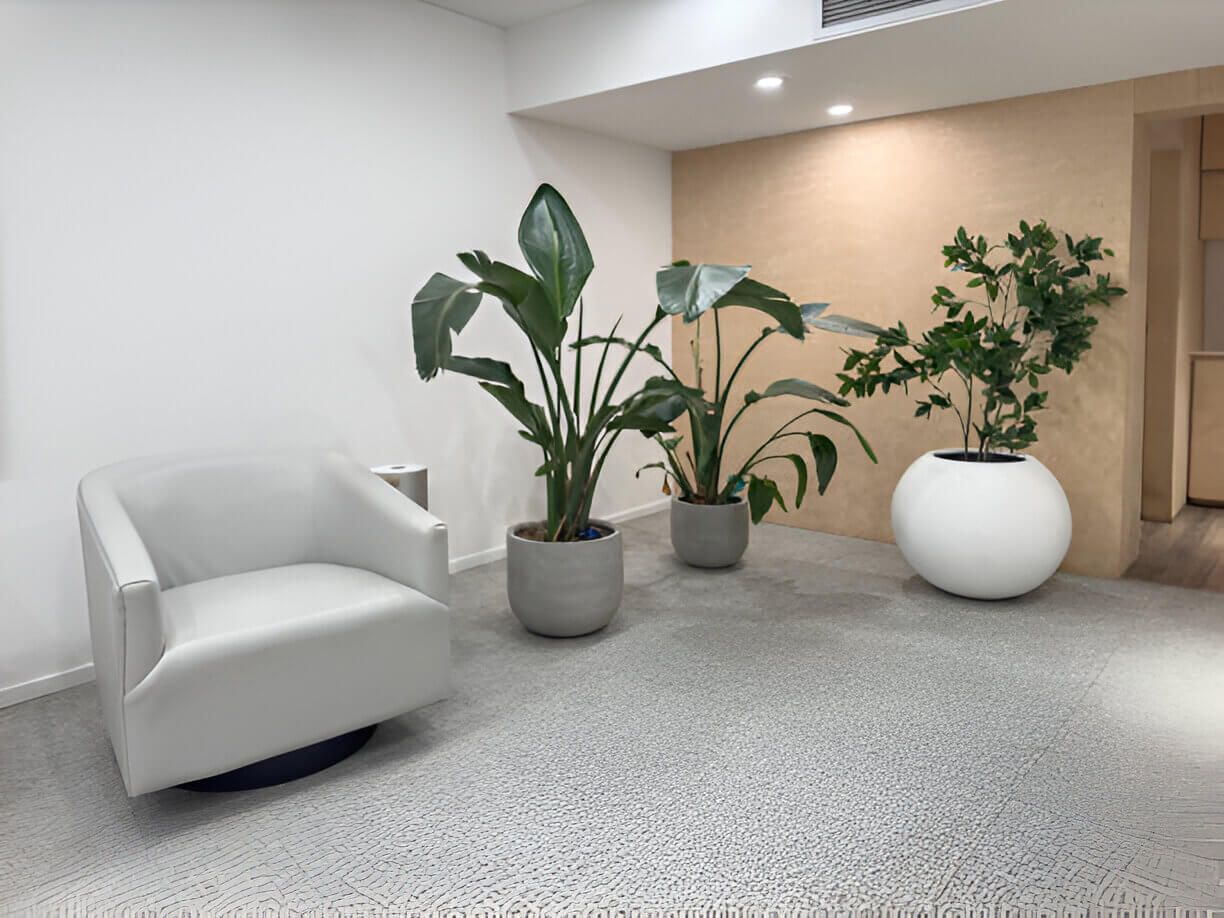In the urban landscape of the United Arab Emirates (UAE), where modern architecture blends with dynamic growth, the concept of indoor green spaces is gaining momentum. As more residents seek to incorporate elements of nature within their homes, the challenge lies in designing spaces that are both aesthetic and functional while remaining environmentally sustainable. This comprehensive guide will delve into various facets of indoor green space design for UAE homes, supported by data, authoritative insights, and a forward-looking perspective.
Importance of Indoor Green Spaces in the UAE
The significance of indoor green spaces in the UAE extends beyond mere aesthetics. In a desert climate where temperatures can soar above 40°C, indoor plants offer a plethora of benefits, from improving air quality to enhancing mental well-being. According to a study by the United Nations Environment Programme (2020), indoor pollution levels can be 2-5 times higher than outdoor levels, making air-purifying indoor plants crucial in UAE homes.
Key Themes in Designing Indoor Green Spaces
Environmental Considerations
One of the primary considerations when designing indoor green spaces in the UAE involves adapting to the region’s unique climatic conditions. With some of the harshest weather on the planet, plants must be carefully selected to survive and thrive in indoor environments, often characterized by air conditioning. Species like the Rubber Plant, Peace Lily, or even the Zanzibar Gem are popular choices due to their resilience and low maintenance needs.
Water and Resource Efficiency
Water conservation is paramount in the UAE, as it ranks among the top countries for water scarcity. Homeowners are encouraged to employ water-efficient practices. According to a report by Gulf News (2022), the UAE’s average water consumption rate is 550 liters per capita per day. This calls for innovative solutions like utilizing greywater for plant care and installing automated irrigation systems to optimize water use.
Psychological Benefits and Wellness
Indoor plants offer psychological benefits that cannot be overlooked, despite the challenging arid environment. Greenery helps to reduce stress and increase productivity. A landmark study by the Journal of Environmental Psychology (2019) highlighted how just viewing the color green can enhance mood, making it critical for homes in urbanized regions like Dubai and Abu Dhabi.
Design and Layout
The effectiveness of indoor green spaces lies in thoughtful design and layout. A balanced arrangement that considers natural light sources, airflow, and the inherent design style of the home can greatly enhance the visual appeal while maximizing the benefits of the plants.
Popular Indoor Plants in UAE and Their Benefits
| Plant Name | Benefits | Maintenance |
|---|---|---|
| Snake Plant | Air purification, low maintenance | Very low |
| ZZ Plant | Tolerates low light and drought | Low |
| Peace Lily | Air purification, aesthetically pleasing | Moderate |
Sustainability and Eco-Friendliness
Creating sustainable indoor green spaces aligns with global environmental goals. The push towards sustainable living is echoed in UAE’s Vision 2021, which stresses environmental sustainability. Employing recyclable and sustainable materials in plant holder designs or opting for custom-made plant containers that use eco-friendly materials is a progressive step.
Technology Integration
The integration of technology in managing indoor green spaces is a growing trend. Automated plant care systems, utilizing IoT devices for monitoring humidity and soil moisture levels, can be invaluable. A report by Mordor Intelligence (2023) highlights a 25% year-over-year growth in the UAE smart home market, indicating a burgeoning interest in tech-driven home interventions.
Economic Impact and Cost Considerations
While initially setting up an indoor green space may incur costs, the long-term economic benefits are notable. Energy savings from natural cooling and air purification can offset initial expenses. Furthermore, indoor plants can add to property value, a tantalizing prospect in the real estate-driven economy of the UAE.
Challenges in Implementing Indoor Green Spaces
One of the primary challenges involves overcoming common misconceptions surrounding indoor plant care in the UAE. Many assume all plants require intense sunlight, which isn’t feasible indoors. Educating homeowners on appropriate plant choices and their care is vital.
Case Studies: Success Stories
An analysis of successful implementations, such as the “Green Oasis” initiative in select Dubai skyscrapers, showcases the potential and effectiveness of planned indoor green spaces. These transformations have led to a documented 15% increase in tenant satisfaction as reported by infrastructure journals.
Government Policies and Initiatives
The UAE government’s policies on sustainable urban development support the proliferation of green spaces indoors. According to the UAE Green Agenda 2030, initiatives encouraging the use of green walls and bio-philic designs are gaining traction.
Collaborative Efforts and Community Involvement
Promoting community involvement is crucial for the success of indoor green spaces. Local workshops and educational sessions, often hosted in collaboration with environmental NGOs, facilitate knowledge sharing and promote wider adoption.
Key Takeaways
The future of indoor green space design in UAE homes is vibrant, with numerous opportunities for sustainable development. The sector benefits from advancements in technology, supportive government policies, and a growing awareness of environmental responsibilities. While challenges persist, there is a clear trajectory towards a greener, more sustainable residential landscape. As residents embrace the myriad benefits—from economic savings to psychological wellness—the incorporation of indoor green spaces stands poised to become a mainstay in UAE urban living.
Frequently Asked Questions
What are the best indoor plants suited for the UAE climate?
The best indoor plants suited for the UAE’s climate include the Snake Plant, ZZ Plant, and Peace Lily. These plants are known for their resilience and ability to thrive in indoor environments with air conditioning. They require minimal maintenance, can tolerate varying light levels, and contribute to improving indoor air quality by removing toxins. These characteristics make them ideal for the unique climatic conditions prevalent in UAE homes.
How can I ensure sustainable indoor plant care in a water-scarce environment?
In a water-scarce environment like the UAE, sustainable indoor plant care can be ensured by optimizing water use. This can be achieved by selecting drought-tolerant plants, utilizing greywater systems for irrigation, and investing in automated watering devices that precisely control water supply based on the plant’s needs. These practices align with efficient resource management while maintaining the health and vitality of indoor green spaces.
What are the economic benefits of having indoor green spaces in UAE homes?
The economic benefits of having indoor green spaces in UAE homes include energy savings, enhanced property value, and reduced medical costs due to improved air quality and psychological wellness. These spaces promote natural cooling, potentially reducing reliance on air conditioning and thus lowering energy bills. Additionally, properties with well-designed indoor green spaces are more attractive in the real estate market, potentially fetching higher prices or rents.
How can technology aid in maintaining indoor green spaces?
Technology can significantly aid in maintaining indoor green spaces through smart home devices that automate plant care. These devices include soil moisture sensors, automated irrigation systems, and climate control systems that monitor and adjust for optimal plant conditions. They offer convenience and precision, ensuring plants receive the right amount of water, light, and temperature, ultimately enhancing plant vigor and homeowner convenience.
What challenges do homeowners face when integrating green spaces indoors?
Homeowners in the UAE face several challenges when integrating green spaces indoors, including misconceptions about plant needs, limited interior lighting, and space constraints. Many homeowners may not be aware of suitable plant species for indoor environments, leading to poor plant health. Addressing these challenges involves educating homeowners about appropriate plant choices and leveraging design strategies such as vertical gardens to optimize limited space. Additionally, utilizing technology for plant care can mitigate some of these challenges, providing an overall sustainable approach to indoor greenery.


